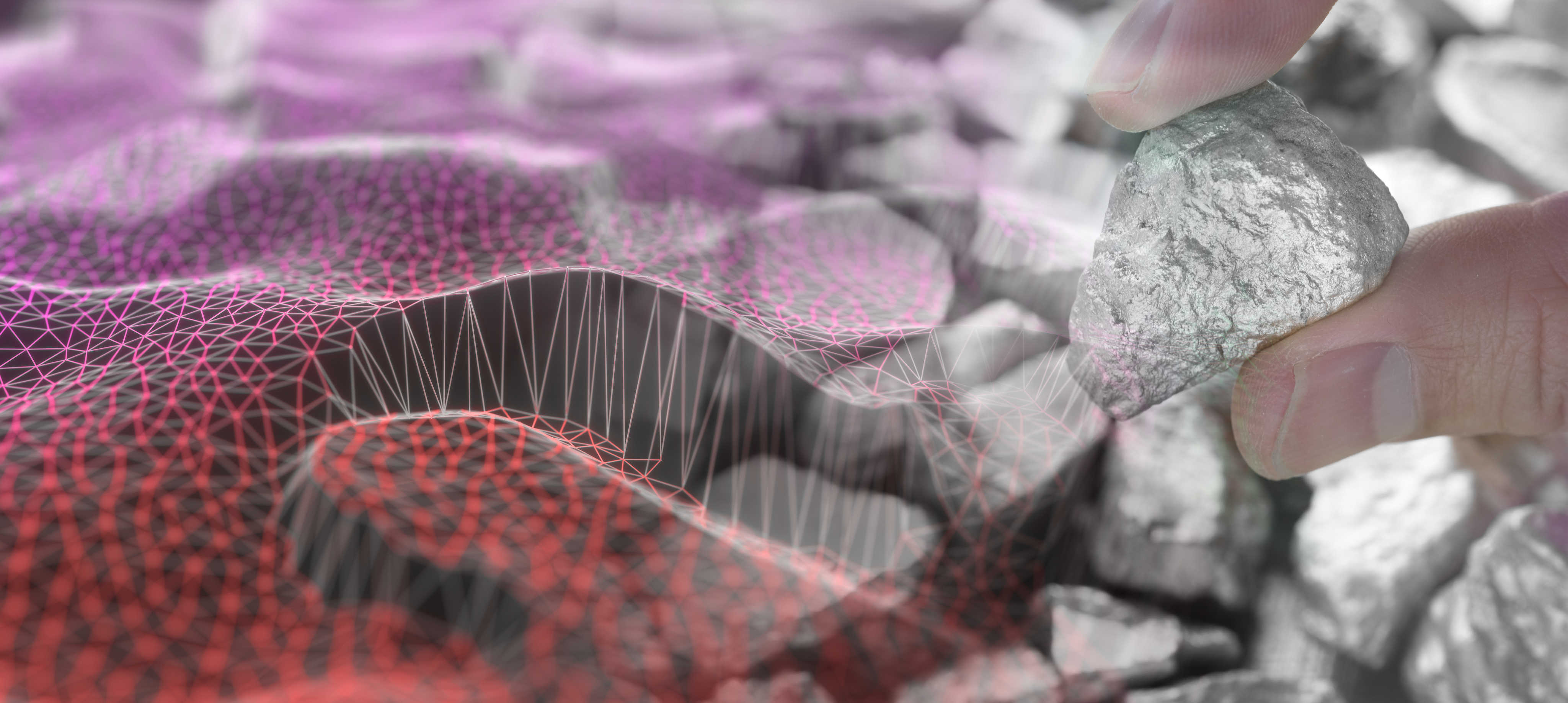Chemical and biological innovations for rare earth processing and refining
Through the Circular Critical Materials Supply Chain (CLIMATES) programme, we are supporting the development of innovations that could improve the economic and/or ESG performance of the processing and refining of rare earth elements.

This article by Matthew Reeves, Knowledge Transfer Manager – Materials Chemistry and Formulation, details the current refining approach and summarises novel methods which are being developed.
Rare earth elements (REEs) are a group of 17 metals that are critical to many high-tech products, including smartphones, electric cars, wind turbines and military equipment. The steps involved in mining, processing, and refining REEs are complex and involve a combination of physical and chemical processes:
- Mining: REEs are often found together with other minerals in ore deposits (e.g. monazite, bastnasite), and extraction typically involves a combination of open-pit and underground mining methods. The ore is then transported to a processing plant.
- Crushing and milling: The ore is crushed and ground into small particles. This helps to liberate the REEs from the surrounding minerals.
- Beneficiation: This is used to separate the REEs from the other minerals found in the ore. A common process for this is froth flotation, where chemicals are added to the crushed ore to create a slurry, which is then agitated with air bubbles. The REEs attach to the bubbles and rise to the surface, where they can be collected and separated from the other minerals.
- Hydrometallurgy: Beneficiated REEs are then subjected to a series of chemical treatments, known as hydrometallurgy, to extract individual elements. The process typically begins with leaching the REEs with strong acids or alkalis. These dissolve the metals and separate them from unwanted impurities. This is generally followed by a separation step (solvent extraction) which separates the individual elemental species from each other. Solvent extraction is recognised as one of the most energy, chemical, time and financially intensive steps in the process.
- Refining: REEs are processed further to produce high-purity metal compounds (e.g. neodymium oxides or carbonates at concentrations of greater than 99%). This typically involves the use of techniques such as electrolysis or vacuum distillation to separate and purify the individual REEs.
Overall, REE mining, processing and refining from the mineral ores requires significant investment in infrastructure, energy, and chemicals. In addition, the processes can generate large amounts of waste materials some of which can be radioactive, posing environmental and health risks if not managed carefully.
Alternative methods and innovations that could improve the economic and/or ESG performance of the processing and refining of rare earth elements are being supported through the CLIMATES programme. Of particular interest are novel chemical or biological methods, and innovations focussed on improving the industry-standard approach mentioned above. Some of the novel methods currently being developed for the processing and refining of rare earth elements are summarised below.
Novel chemical methods
REE-bearing minerals need to be dissolved in solution to allow the concentration and separation steps. There are several novel methods that can improve the energy efficiency and selectivity of these processes.
Ionic liquids
Ionic liquids (ILs) are compounds completely composed of ions and with a melting point less than 100C. They constitute a burgeoning research area owing to their ‘green’ and ‘designer’ properties. They allow for the facile tailoring of chemical processing, whether that be as catalysts for chemical transformation, or as solvents for extraction and separation. For a given chemical process, a precise specification and design can be sought by using ILs in combination with supports (e.g. MOFs, or membranes) to improve the reaction yield or separation efficiencies or other performance parameters.
Deep eutectic solvents
Deep eutectic solvents (DESs) are a relatively new class of ILs, formed of a eutectic mixture of Lewis or Bronsted acids, which can contain a variety of anionic and/or cationic species. One of the major application areas of DESs is in metal processing, where their tuneable properties allow for selective dissolution and separation of a variety of metal species, including oxides.
Supramolecular chemistry
Supramolecular chemistry focuses on the exploitation of non-covalent, intermolecular forces to create large molecular structures that lend themselves to multiple applications, including as vehicles for metal extraction.
Solid phase extraction using ordered mesoporous materials
Ordered mesoporous materials (OMMs) are a class of porous materials that can be used to adsorb and separate chemical species from complex mixtures. Recently, materials based on silica and carbon have been fabricated to possess high specific surface area, high pore volumes and anchoring sites that are able to covalently bond to organic ligands, which show promise as a REE separation approach.
Novel biological methods
Hyperaccumulation
Some plants are adapted to grow in highly metalliferous soil environments and can adsorb high concentrations of metals from those soils through their roots. They are known to have been used in phytoremediation of toxic lands, returning them to a less toxic state. The fundamental mechanisms for tailoring the plants to target a specific metallic species require more research, and to process materials on a commercial scale may require prohibitively large amounts of land use. However, this approach provides an environmentally friendly pathway to the concentration and separation of metal ions required in the REE value chain.
Biosorption/bioleaching
Certain microorganisms and biomass, including fungi and bacteria, can selectively bind to metal ions in solution, providing a concentration and separation approach that is low in energy requirements, emissions and operational costs. Advances in bioengineering can be leveraged to modify the microorganisms to target specific metal species. This approach is immature at this point, with hurdles to overcome such as low reaction rates as large space requirements, but could be applied feasibly to complex mixtures of metal ions where existing techniques are energy and time intensive.
Improvements to mature methods
AI-enabled process control
Solvent extraction of REEs is a finely-balanced chemical process requiring 10s if not 100s of extraction cells. Such a process lends itself to optimisation via AI-enabled process control technologies, which have seen a rapid development over recent years. The so-called ‘digital twin’ can increase efficiencies, reduce down-time and provide mechanistic process insight that can be used to improve the performance of the entire system.
Engineering
As with any chemical process, the performance of the process can be enhanced through innovations in engineering design. For solvent extraction of REEs, this could be realised through the redesign of extraction cells and/or the redesign of the chain of cells that are required for successful separation. In the future, incorporating novel technologies like the ones mentioned above will require significant engineering work.
In following articles, we will discuss the status and future opportunities of the other themes within the programme: Magnet Manufacture, Circular Economy and Alternatives.
To keep informed of programme activities, sign up to the CLIMATES mailing list here or contact one of our experts.
Related programme

Circular Critical Materials Supply Chains
This £15 million programme will support the development of resilient UK based supply chains for rare earth elements, with a focus on primary (mine to magnet) and secondary (End of Life to magnet) supply chains.


